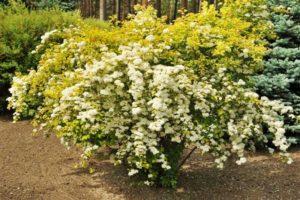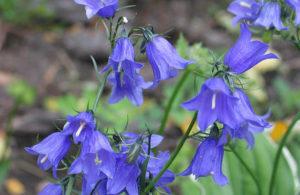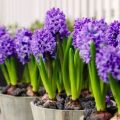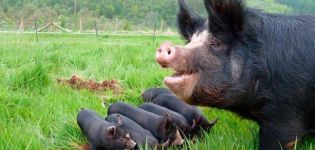Description of perennial Gaillardia varieties, planting and care, breeding methods
Perennial Gaillardia is considered one of the favorites for decorating a personal plot. Features of planting and care, breeding methods are important information for everyone who wants to grow this attractive plant in their own flower bed. Gaillardia resembles chamomile in external form, but in terms of color it differs in brightness and diversity. The semi-shrub is actively used by designers to create the most daring and unusual color compositions.
Description
Perennial Gaillardia from the Asteraceae family owes its unique name to a patron from France Gaillard de Charento, who was fond of botany.
The culture has chosen the territory of North and South America, and is cultivated on almost all continents, because it is resistant to drought and the ability to develop in areas with frequent temperature changes.
The height of the Gaillardia reaches 1 meter. The stems are densely branched. The leaves, which are oval in shape and serrated edges, are alternately located on the stem. Tall peduncles contain flowers at the top, collected in huge inflorescences. One bud consists of numerous ligulate serrated flowers at the edges.
Kinds
There are many types of Gaillardia, each of which can be recognized by its appearance.
Beautiful
The sprawling Gaillardia bush has thin and high pedicels with inflorescences-baskets in diameter 6-7 cm at the top. The bud is a spectacular red-purple color, which turns yellow by the end of flowering. Some varieties of Gaillardia Beautiful are annuals, therefore they are not in demand among gardeners.

Pict
Unusual bright Gaillardia has a double or semi-double large inflorescence. The second name is "painted", due to the variety of colors that the bud can be painted with.
Lorenz
The variety is distinguished by spherical double inflorescences, consisting of yellow-red reed and yellow tubular funnel-shaped flowers with a toothed limb. Gaillardia can bloom for a long time from June to the second decade of November.
Red plume
Gaillardia has double inflorescences with ligulate red flowers, which are located in 2-3 rows. The tubular parts of the inflorescence have a purple hue and are funnel-shaped.

Yellow plume
The Gaillardia variety is popular with gardeners. Inflorescences-baskets have a spherical shape and terry. The core consists of yellow pseudo-lingual flowers.
Spinous
This plant is prized by gardeners for its straight shoots with dense pubescence in the upper part. The height of the Gaillardia varies from 30 to 75 cm. The basket can reach a diameter of 12 cm. The foliage is in the form of an oval with a serrated edge, and the variegated ligulate flowers are colored yellow or orange. Depending on the color, Spinous Gaillardia is subdivided into different varieties.
Mandarin
This variety of Gaillardia lives up to its name, because it has a bright color of petals arranged in several rows.
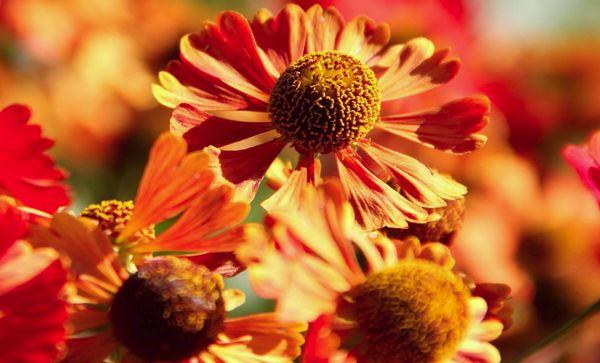
Wirral flame
The core has a ruby hue, which evenly turns into a light orange to the edge of the petals.
Dazzer
The bases of the reed flowers have a red tint, and the edges have a yellow, sandy tint.
Croftwav yellow
The inflorescence is often compared to the sun due to the rich yellow color of the petals.
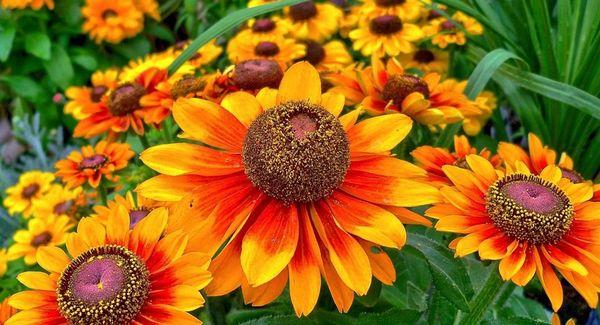
Hybrid
The parents of the hybrid are Spinous and Beautiful Gaillardia. The average plant height is 80 cm. The shoot is decorated with lanceolate pubescent leaves, symmetrically located on a high stem. The culture blooms for a month and a half with large double inflorescences, painted in hot colors.
Bremen
This variety is capable of growing up to 70 cm. The marginal petals of inflorescence baskets have a bright wine color, decorated with a crimson border.
Burgundy
The plant reaches 50 cm and has inflorescences of a monochromatic wine color.
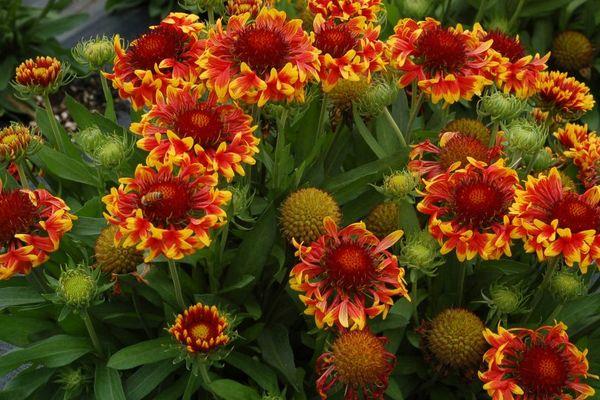
Zone
Often does not exceed 50 cm, inflorescences in the form of baskets include reed flowers of a yellow tone, which shimmers from a dark to a light shade.
Kobold
They are distinguished by straight and branched shoots, reaching a height of 150 cm. The bud itself is large with a crimson core consisting of tubular flowers. Reed flowers shimmer with a yellow tint, which gradually turns into red towards the end.
Golden goblin
The recently bred variety is distinguished by a perennial shoot of low growth, which is crowned with a golden-hued inflorescence. Has a long flowering period, great for decorating a stone flower garden.

Tokajer
A novelty in the field of breeding of ornamental plants, which is distinguished by its high growth. The perennial bush has a large number of bright orange inflorescences that look great when composing a composition.
Primavera
A low-growing variety, not exceeding 25 cm in height. The compact bush has rosettes, from which up to 8 peduncles are formed, crowned with baskets up to 12 cm in diameter.
Arizona sun
It grows no higher than 30 cm. Forms a round bush with gray-green foliage and numerous inflorescences. Attention is drawn to the orange-red flowers that bloom in June and delight in September.
Grandiflora
Compact form of Gaillardia 25-30 cm high. One rosette can form 6-8 peduncles, with terracotta-red flowers 10-12 cm in diameter.

Oriental patterns
Large inflorescences up to 12 cm in diameter with copper-red, yellow flowers at the ends and yellow with a scarlet shaded center. Gaillardia bloom lasts from June until frost.
Montana
Exotic perennial with a straight stem, bending at the bottom, up to 75 cm tall. Single inflorescences, up to 12 cm in diameter. Ligulate flowers are variegated, have a yellow, orange color. Gaillardia is able to bloom for a long time and take part in the preparation of many successful color compositions.
Lanceolate and obtuse
A tall perennial plant, reaching over 50 cm in height, has dark green leaves and medium-sized reddish inflorescences. The branchy stem of Gaillardia is dotted with a large number of small lanceolate leaves with a dissected border.
Large-flowered
Perennial Gaillardia, which has a large bud size and therefore fully corresponds to its name. The diameter of the inflorescences exceeds 10 cm with ligulate flowers of yellow-red color with a red center. Fascinates with June bloom.

Krasava
The plant can grow up to 70-75 cm, shows off single inflorescences with variegated ligulate flowers with a dark yellow core. The shoots in the lower part have a peculiar bend.
Red shades
A compact bush, not exceeding 30 cm, with 6-8 peduncles on one representative, on which there is a large inflorescence from 10 to 12 cm in diameter. It can bloom for 5-6 years.
Amber
Gaillardia grows to a height of 70-75 cm, inflorescences grow up to 12 cm in diameter. Abundant flowering is observed throughout the summer. Used in the manufacture of the most elegant and bright bouquets.
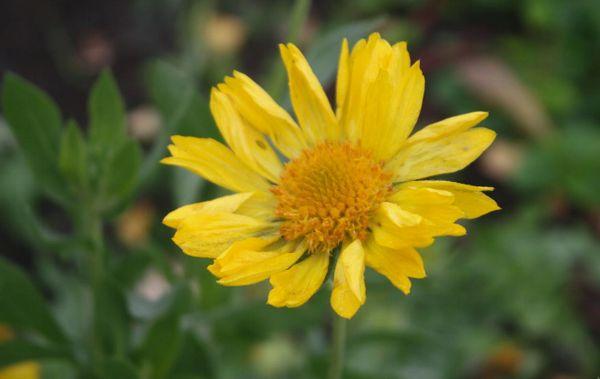
When and how to plant
There are two methods of planting Gaillardia with seeds: sowing in the ground and using seedlings. The first is practically not used, since the conditions of our climate do not allow the plant to fully develop, and more than half of the seedlings die.
Seedling method
One of the popular methods is seedling, since it guarantees a high percentage of germination, but requires more effort, unlike direct planting into the soil.
Disembarkation
Sowing should be started in early March. To do this, you need to take containers in the form of small containers or pots, fill them with moist soil and distribute seeds over the substrate. Gently sprinkle on top with a thin layer of nutrient soil or vermiculite, which contains such active minerals as potassium, magnesium, silicon, iron.
Storage
Place the material in a lighted place, but also take care of the absence of direct sunlight. The germination temperature of perennial Gaillardia seeds is 20-22 degrees. The sprouts will begin to appear already in the second week. After the first shoots, move containers with crops to a cool place, where the air temperature will be no more than 20 degrees.
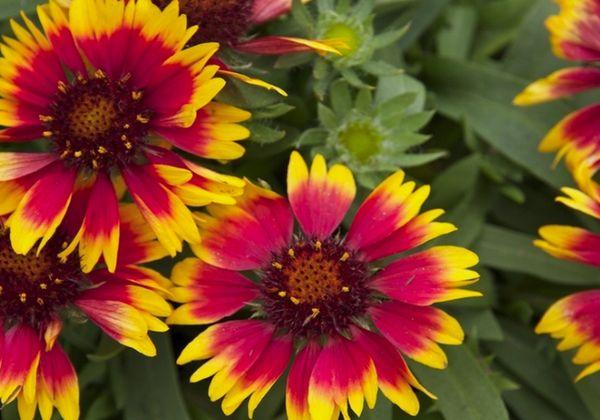
Moisturizing
Watering is carried out as needed, as soon as the soil is dry, it must be moistened. Do not overfill with Gaillardium to reduce the risk of gray mold infection.
Picking
In the process of growth, seedlings must form new leaves, therefore, provide the plants with enough space for full development. The distance between the shoots should not be less than 5 cm, the rest of the shoots should be moved to separate containers.
A pick is made only after the full development of the first two true leaves.
Transfer
After 2 weeks, harden, leaving perennial Gaillardia in the fresh air for 2-3 hours a day, gradually increasing this period. As the seedlings adapt to outdoor conditions, they can confidently be transplanted into open soil. It is recommended to transplant in the last days of May.
Landing in open ground
Before planting, it will take care of the fertility of the soil. Gaillardia does not develop well on soil with high acidity, which is capable of retaining moisture. The soil should be light, moderately enriched with nutrients and have good drainage.
To properly prepare the soil for planting a crop, you need to enrich it with 1 bucket of humus, ash, as well as 100 g of minerals for each 1 m2 plot.
The distance between shoots should vary from 20 to 25 cm. The number of seedlings in one hole should be determined depending on the variety. To make the bush lush, it is recommended to plant 2-3 plants in one hole. Moisten the soil after planting.
Location and timing
Landing can be done only with the onset of good weather and when the soil is fully warmed up. One of the important features of perennial Gaillardia seeds is their excellent tolerance to low temperatures. But seedlings will begin to form only when it warms.
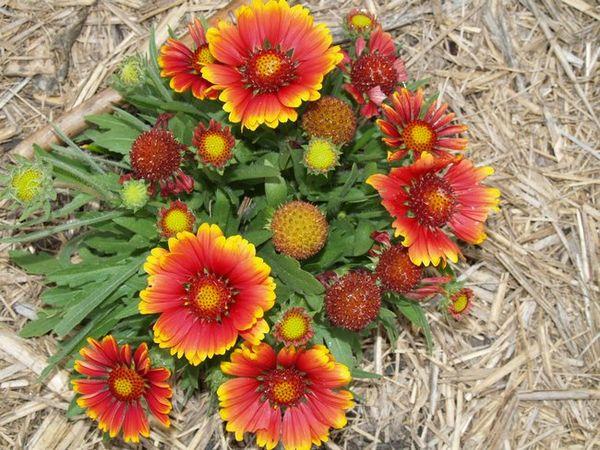
When choosing a landing site, give preference to sunny, wind-protected areas.
Weeding and loosening
A culture such as Gaillardia is undemanding in care, but does not tolerate weeds, it must be removed regularly. In addition to weeding, systematically loosen the soil in order to saturate it with oxygen, which the root system needs for normal growth.
Watering
Watering is needed only in the absence of rain. The culture does not tolerate stagnant water and excessively moist soils, therefore it is recommended to apply a small amount of water during the dry season.
Garter and seating
You need to get rid of dried leaves and inflorescences in a timely manner, carefully cutting them. Tall varieties require a garter so that heavy stems do not fall apart in different directions and have a well-groomed appearance.
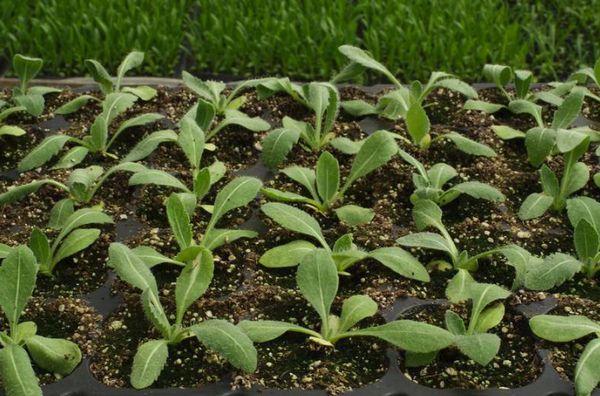
Top dressing
Perennial Gaillardia needs at least three feeding during one season. In this case, it is worth observing the feeding schedule:
- During the formation of inflorescences.
- At the moment of flowering.
- A month before the onset of frost.
Humus and complex mineral substances will serve as top dressing; manure cannot be used for such purposes.
Mulching
Gaillardia needs regular soil mulching to enrich it with oxygen and nutrients. This will positively affect the functioning of the root system.
Preparing for winter
Wintering is given to the plant quite simply, since it tolerates well even significant drops in temperature, with the exception of young plantings. Therefore, Gaillardia must be properly prepared for the winter, before frosts have time to cover it with foliage.
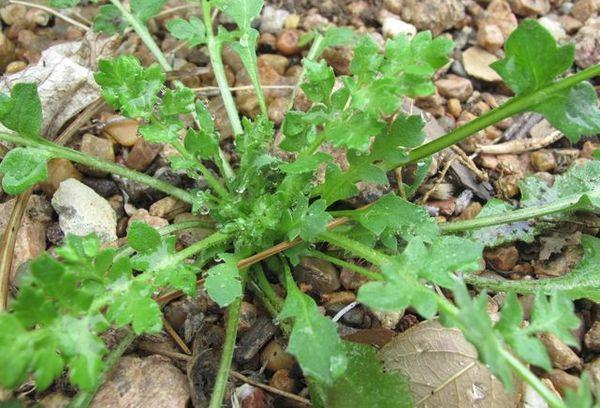
Post-flowering care
After flowering Gaillardia, cut off the dried buds, fertilize the soil using minerals, and start preparing perennial Gaillardia for the winter period.
Diseases and pests
With proper planting and adherence to all aspects of care, Gaillardia can resist disease and pests well. The cause of diseases is considered to be waterlogged soil and shade.
Prevention is simple enough: cultivate Gaillardia in the right place, providing it with space and observing the irrigation conditions.
Powdery mildew
A white bloom forms on the vegetative parts of the plant, leading to its gradual wilting.
White rust
In the first stages, a white bloom appears, which acquires a reddish tint.
Aphid
The pest pierces the epidermis of the plant and sucks out the juices, this prevents the perennial from fully developing.
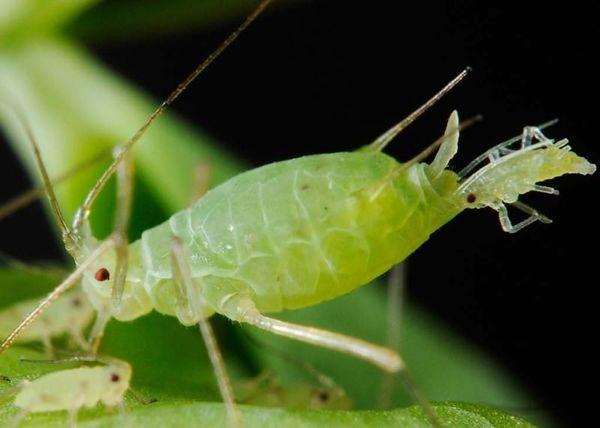
Whitefly
A small white midge feeding on flower sap is considered a carrier of various viruses and infections.
Reproduction
There are two ways to breed Gaillardia - by seeds and by dividing the bush. It is recommended to resort to such actions when the plants reach the age of 4-5 years.
Seeds
Gaillardia seeds are formed in the core closer to autumn. They should be collected, sorted out, leaving only large and healthy specimens. Store in a dry, warm place in bags or paper bags that can allow sufficient air to pass through. For the next season, the seeds can be used for planting.
By dividing the bush
The bush must be carefully dug up and divided into parts with shoots and roots. Plant the resulting parts on flower beds. The procedure is carried out in the spring.
Use in garden design
Gaillardia is used to supplement conifers and ornamental shrubs. It goes well with lupine, forms an interesting composition with rudbeckia, echinacea. Low-growing varieties are used to decorate curbs and garden paths.
Answers on questions
How to prune Gaillardia?
Carefully remove only the dried vegetative and generative parts of the bush, without damaging the main central trunk.
What is the flowering time of Gaillardia?
The flowering time depends on the variety. Perennial mostly blooms almost all summer and the first month of autumn.
To grow a beautiful Gaillardia, you should properly look after it, know how to transplant and protect it from possible dangers.And then the perennial, surrounded by attention, will decorate any adjoining territory with bright flowering and elegant appearance.
Reviews
Vera: “One of the most unpretentious and frost-resistant ornamental crops. I have been growing it for a long time in a flower bed, using it to make original bouquets. "
Marina: “The plant grows quickly and fills in all the free gaps. Small varieties on the edges of the tracks look great. "
